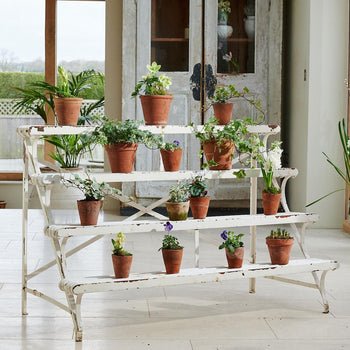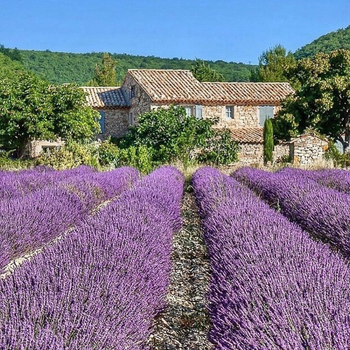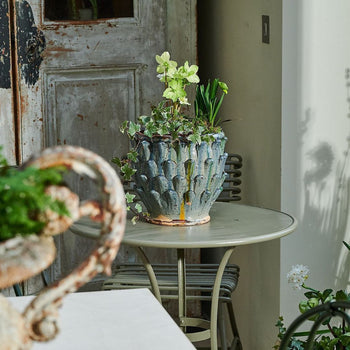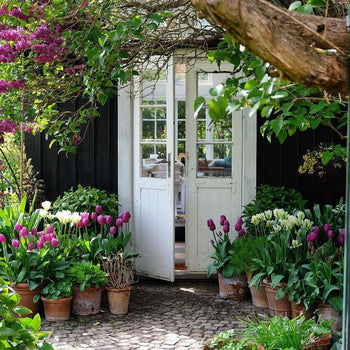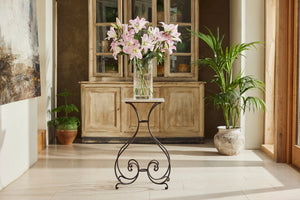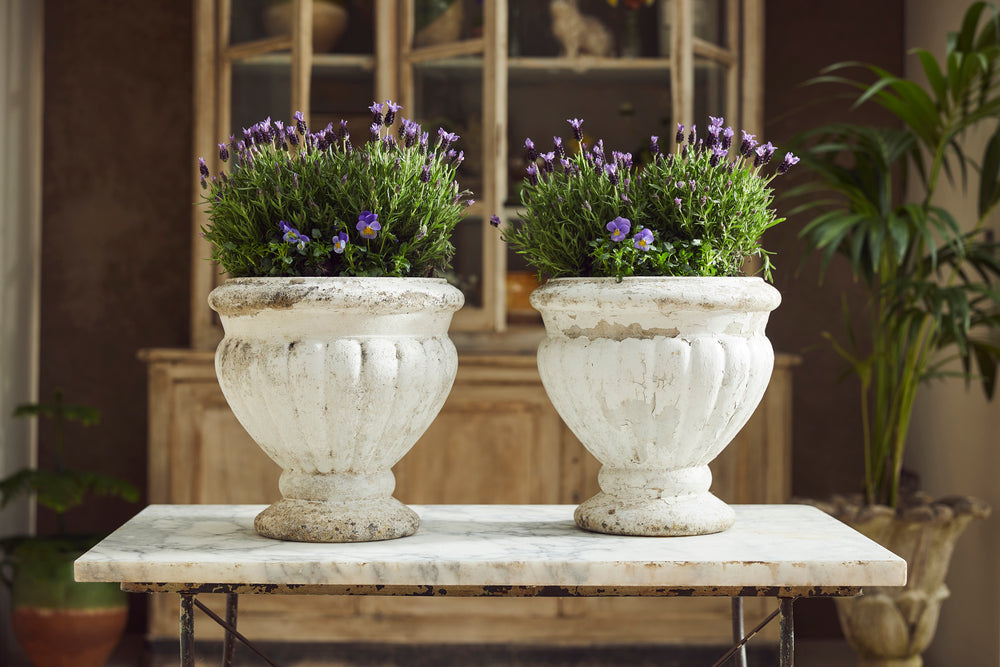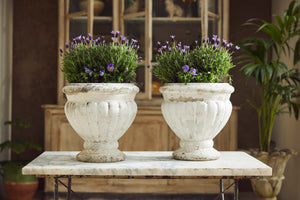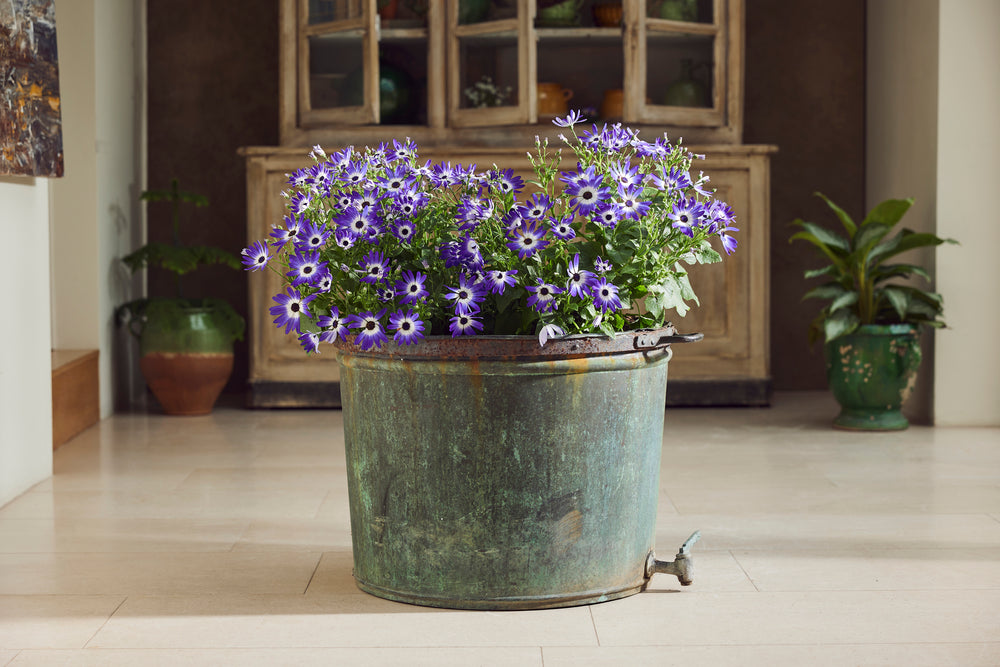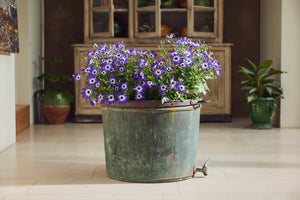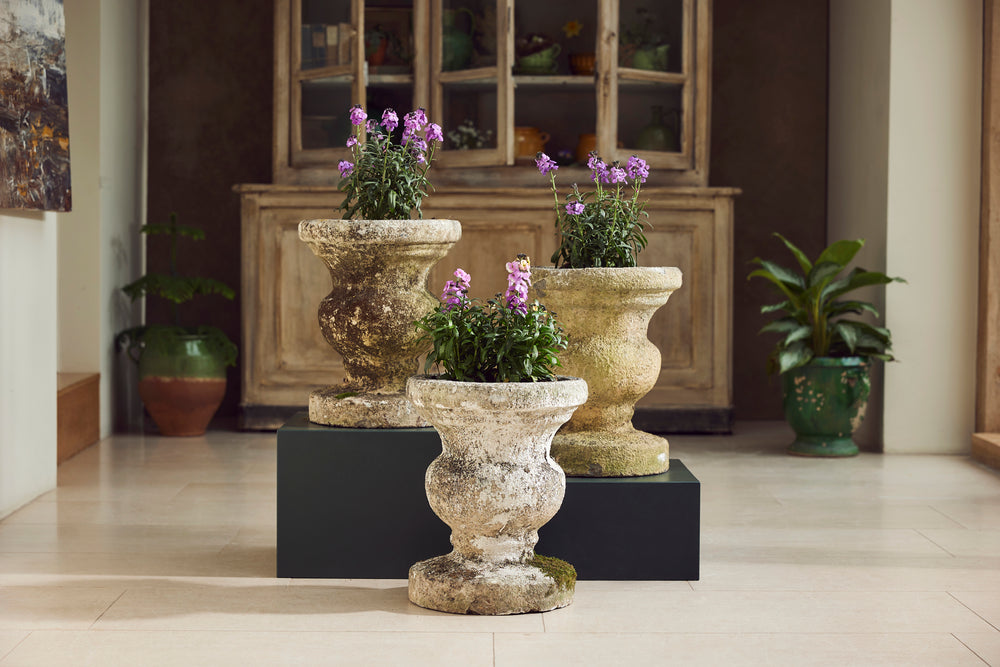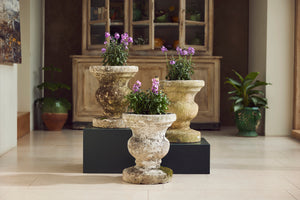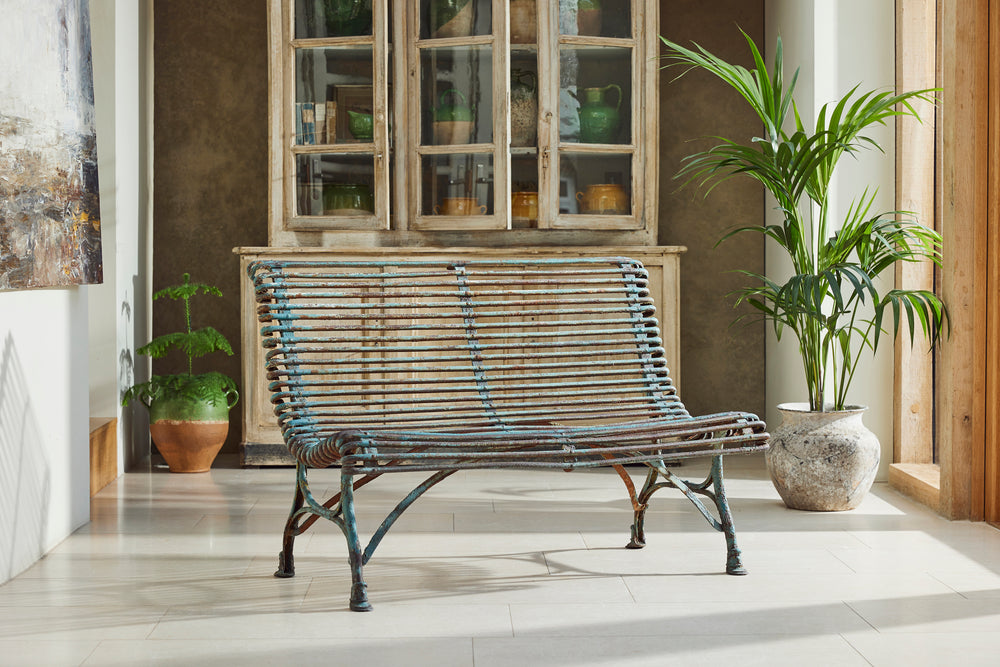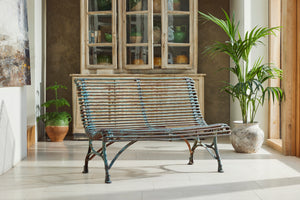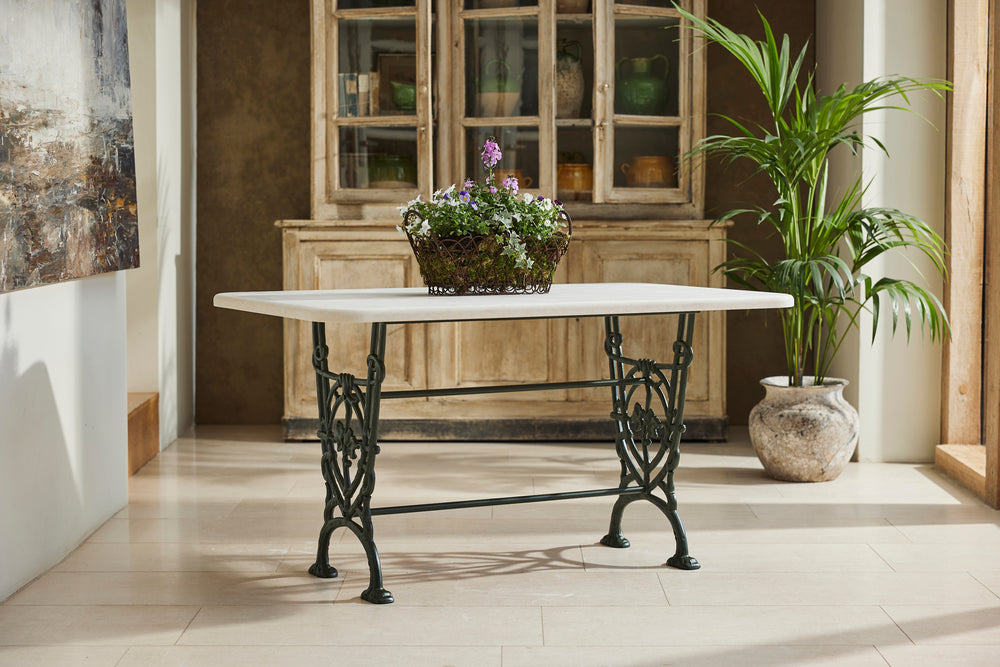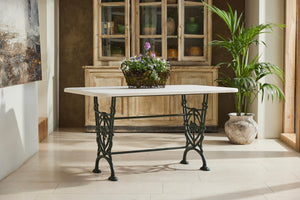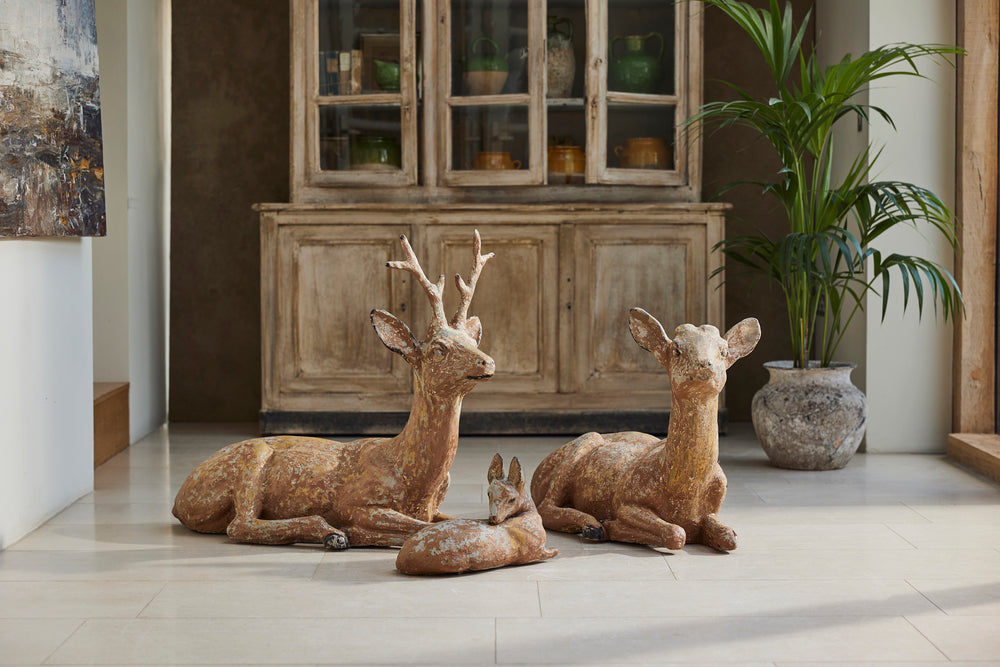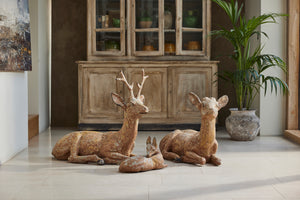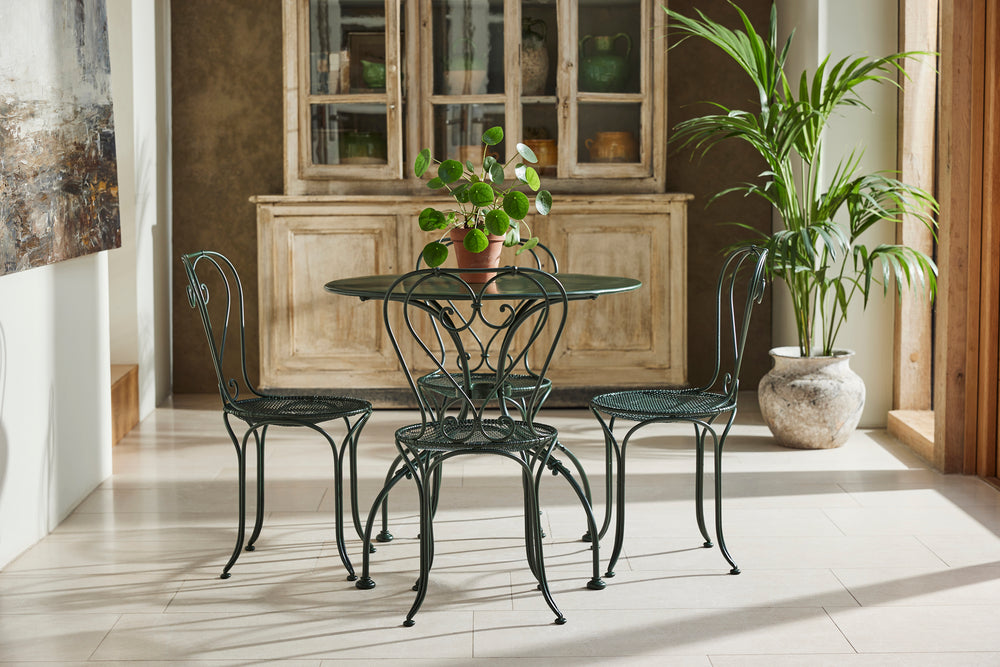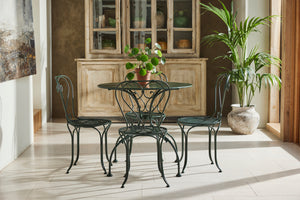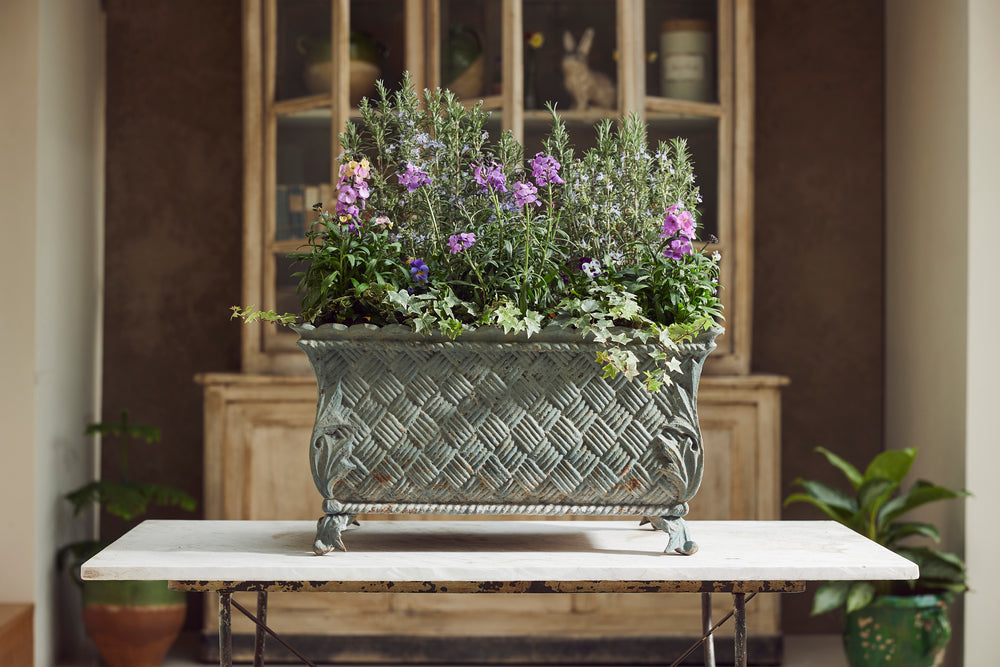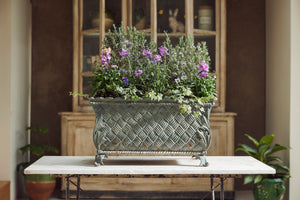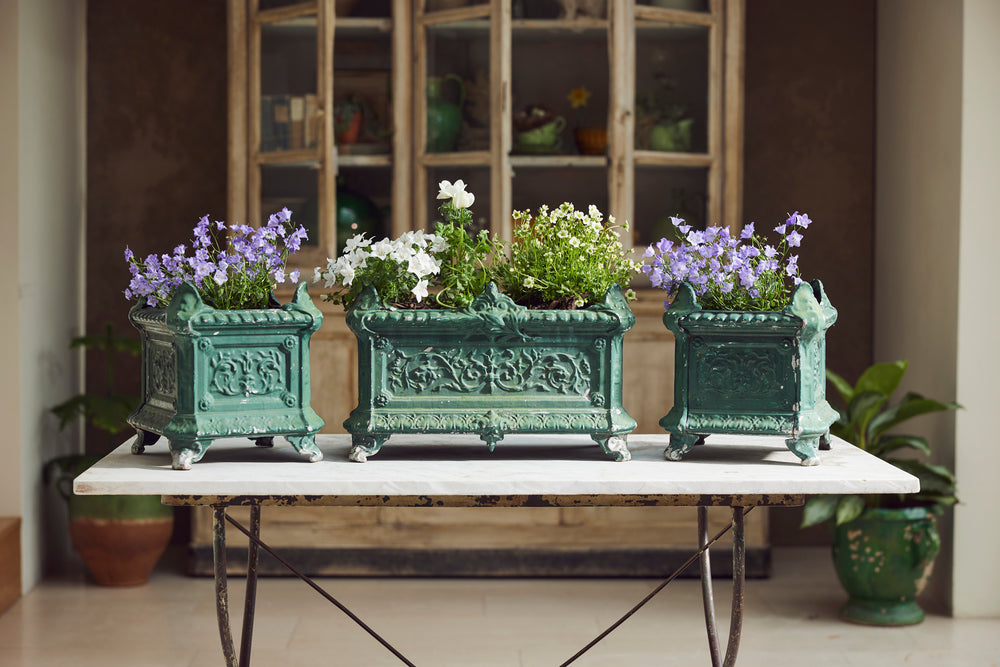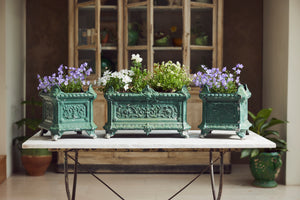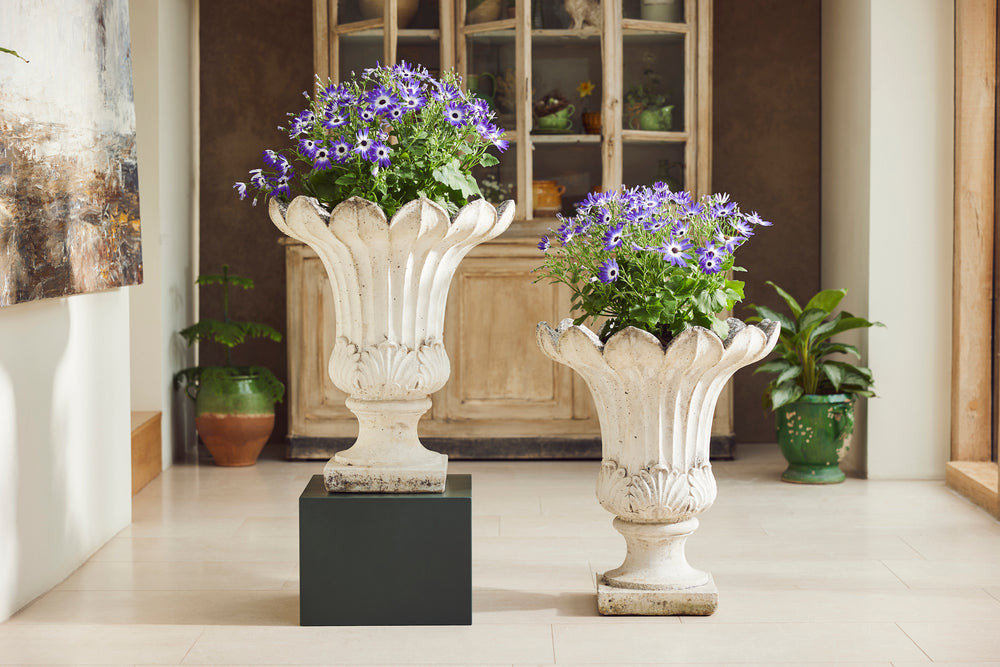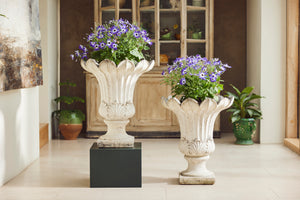The do’s and don’ts of investing in garden antiques for your home or garden
Introduction
Garden antiques are beautiful, timeless pieces that add a touch of elegance and history to any indoor or outdoor space, so it isn’t a wonder why many designers incorporate them into their plans - this Buyer’s Guide will give you the confidence to seek that perfect piece of timeless beauty for your home or garden.
Violet Grey carefully source and curate antiques that have an enduring aesthetic appeal, that transcend trends, fashion, and time periods. Timeless pieces that are not bound to a specific era, culture, or style, that are appreciated and admired for their inherent beauty and quality. Many of the pieces in our collection are one-of-a-kind and rich in history.
We hope you love them as much as we do.
They are classic with understated designs, high-quality craftsmanship, and enduring materials that age gracefully and retain their appeal over time. So much so that they are often used inside the home to add an eclectic touch, visual interest, and a connection with nature and the past.
If you’re considering purchasing antiques for your own home or garden, we’ve put together this Buyer’s Guide to help you make the right choice…

How garden antiques are sourced?
Acquiring antiques can be a challenging process, and requires a combination of expertise, dedication, and knowledge. Issues such as authenticity, availability, pricing, and competition can pose significant hurdles. To succeed in this field, it is essential to have a deep understanding of the antique market and the items themselves. The ability to determine their value quickly and accurately is a skill that comes with extensive experience.
Car boot sales
These are where small antique dealers gather to sell their pieces. Often, you won’t find what you are looking for, however if you know your subject, you can sometimes find a real bargain.
Auctions
Auction houses employ some of the UKs finest experts to assess the authenticity and value of antiques. Expect to pay a buyer’s premium of up to 35% on the hammer price plus storage and collection costs. Most auctions are now online, and this accessibility has made bidding very competitive with prices often exceeding retail levels. Be aware of overpaying in the heat of the moment.
General antiques fairs
In these fairs it is entirely up to the buyer to determine if an item is genuine and value for money. They require early starts and quick decision making as competition for the best pieces is fierce. Unfortunately this means that mistakes can be made and the hustle and bustle can be very stressful.
Professional antiques fairs
One of the major benefits of attending this type of fair is the peace of mind that comes with knowing that every item for sale has been professionally assessed by independent experts prior to being available for sale. This means that you can rest assured that what you’re buying is genuine and described accurately.
Dealers
Antique dealers are often the best, most certain, way to buy antique pieces as the hard work has been done for you. Make sure you look for dealers that work with an accredited trade body membership such as LAPADA or individuals who have a lot of knowledge, experience, and have strong working practices. Find an antique dealer that has a specialty in a field, style, or era to get access to the best pieces and prices.
Top tip
For several years, the trend towards decorative antiques has been growing. Buyers tend to be more interested in the look and how it will enhance the space than they are in the provenance and history of an item. Notwithstanding this, the most unique garden antiques are sourced by dealers and in a time constrained world we maintain that this is the best way of acheiving value for money.
10 common mistakes when buying garden antiques
-
Not researching before buying: One of the biggest mistakes when buying antiques is not doing enough research beforehand. This can lead to overpaying for an item, buying a fake or replica, or missing out on a better deal.
-
Ignoring condition: Condition is a critical factor when it comes to antiques. It can affect both the value and the functionality of the item. Not paying attention to condition can result in buying something that needs costly repairs or restoration.
-
Assuming authenticity: Just because an item looks old doesn’t mean it’s authentic. It’s important to verify the item’s authenticity through research, provenance, or an expert opinion.
-
Focusing on trends: While it’s tempting to focus on popular trends, it’s important to buy what you personally like and not what’s currently in fashion. Trends come and go, but quality and unique items will always hold value.
-
Not considering accessibility: It is important to know that the space you have chosen for your new purchase is easily accessible otherwise you may incur specialist handling costs which can be expensive.
-
Not asking questions: Don’t be afraid to ask questions when buying antiques. The seller should be able to provide information on the item’s history, authenticity, and condition. If they can’t, it may be a red flag.
-
Overlooking provenance: Provenance refers to the item’s history of ownership and can add significant value to an antique. If an item has a well-documented and prestigious history, it’s worth paying attention to.
-
Buying in a rush: Impulse buying is a common mistake when it comes to antiques. Take your time to research and consider your purchase, and don’t rush into buying something without fully understanding its value and condition.
-
Not considering restoration costs: If an antique requires restoration, it’s important to consider the cost and feasibility of restoration before buying. Restoration can be expensive and may not always be possible.
-
Forgetting about taxes and fees: Don’t forget to factor in taxes, shipping, and other fees when buying antiques. These costs can add up quickly and significantly affect the overall cost of the item.
The investment potential of garden antiques

Garden antiques are impressive, statement pieces with great investment potential if chosen carefully. As opposed to buying new, antiques are likely to maintain a very good residual value and over time will increase in value subject to:
Rarity
The rarest antiques will be ones that were produced in small numbers or made by specialist foundries or artisans that only commissioned a few pieces.
Quality
Highest quality antiques will be very well made, and any refurbishment or repairs should match this quality. The higher the quality of your antique, the higher your return.
Provenance
Having information about previous ownership, use, or maker adds value to antique pieces as part of the allure is the story that accompanies them. Old brochures that date earlier purchases in the 19th century are available and perfect for this.
Trends
Regardless of quality, age, or rarity if an item does not fit the latest design trends the price can fall. For example, the trend towards minimalistic interiors has caused less demand for antique ornaments.
Sustainability
Acquiring preowned items such as antiques is the ultimate environmentally friendly purchasing option, as they reduce the need for newly manufactured products and have a carbon footprint that is 16x smaller than their modern equivalents.
Top tip
Antiques are no different to other asset classes whereby quality and sustainability always outperform in the long term.
Antiques; the epitome of sustainable shopping
To be sustainable, simply recycling is not enough; re-use and repurposing are key and antiques deliver this in abundance. Violet Grey is committed to restoring items which may be 100s of years old to ensure they survive for future generations to enjoy.
Buying antiques is a truly effective way for you to take direct action to help the environment. It is the ultimate in recycling with antiques being the eco- conscious choice that is often overlooked. A study conducted by carbon-clear. com and commissioned by antiquesaregreen.org calculated that a new piece of furniture would last 15 years whilst an antique piece would be resold every 30 years. Based on this pattern of consumption, the study concluded that the environmental impact of antique furniture is nearly six times less than that of new furniture. As an example, if you purchased an antique garden table from us, rather than buying new you would save approximately 0.50 tonnes of carbon emissions or an impressive 4% of your annual carbon footprint. By investing in antiques and therefore reusing items that already exist you can help to reduce waste going to landfills and save on energy spent on new production.
Antiques preserve natural resources and were created with the ultimate in green practices – the tools used in furniture manufacturing of the past were hand or treadle operated, and the glues and dyes were produced from natural sources. Buying antiques is the ultimate in eco style and creating your very own sustainable home.
Determining authenticity
It is no secret that popular garden antiques from the 18th, 19th and early 20th centuries have been reproduced over the years. The primary ways of identifying if an item is genuine or not are; patina, wear and tear, design, materials and craftsmanship.
What is patina?
Patina is used to describe signs of ageing on an antique, including fading, oxidising, and darkening. The appearance of patina will vary depending on the amount of time the item has been exposed to the elements and the type of material the antique is made from. Due to weathering and length of time required for processes such as oxidation, in its most natural form, patination is impossible to replicate and thus can increase the value of antiques.
Why is design important?
The design of the antique can often help you determine the authenticity of the antique in front of you. Most antiques will not be exactly symmetrical as they were made by hand rather than by machines, certain fixtures and materials will also have been invented in a specific period and therefore antiques made before will not have that design. There will also be significant signs of use that will wear down the antique irregularly. These will mark the design in ways that replications will not be able to.
Why should wear and tear be expected?
The level of wear and tear is key to determining the authenticity of an antique. This can manifest in various ways depending on the type of antique and its age, including scratches, scuffs, dents, discolouration, fading, cracking, warping, and weakening of joints. The expected level of wear and tear may be considered desirable and add to an antique’s character and authenticity, while other types of damage may detract from its value.
What craftsmanship & materials tell us
Many antiques were crafted by hand using traditional materials. As time passed, different techniques and materials were introduced, making it possible to identify the era in which a piece was created. For example, genuine antiques from the 18th and early 19th centuries often lacked symmetry, since they were not produced by machines. It is crucial to understand how these techniques evolved and how the materials changed over time to accurately determine the age and value of an item.
General metalwork
The largest thing to consider when looking at metal garden antiques is weathering and oxidisation. Metal garden antiques were often painted to protect them from the elements many times over the centuries. As paint peels due to weathering, you often see layers of different coloured paint beneath the top surface right down to the bare metal. Combined with moss and algae, and the impact of wind and rain this is described as the patina and can be very attractive and is impossible to replicate. If a metal item has lost its paint, and therefore protection from the elements, it will oxidise and rust will develop. Copper metal will develop a green patina and bronze metal a blue one. Lead and zinc tend to darken. A sure sign of age is deep and ingrained oxidation which is dark in colour. Items of recent manufacture masquerading as old often have a light layer of chemically induced oxidation.
Look out for: A natural patina, weathering, moss and lichen
Wrought iron
Wrought iron is an iron obtained from smelting crude iron. The term wrought means the ability to be hammered, rolled and worked while hot; it is tough and malleable. Welding was not commercially viable until the late 1930s all wrought iron furniture forged or riveted together therefore pieces that are advertised as pre-dating the 1930s will not have welding in the design.
Look out for: Welding, forging and rivets
Cast iron
Cast iron is a class of iron–carbon alloys with a carbon content more than 2%. The quality of the casting is key to determining the authenticity of cast iron items. Better casting techniques and moulds produced much finer, sharper more consistent detail. Pieces would go through a finishing process unlike many reproductions which are sold straight from the mould. Makers’ marks and serial numbers were used by the big foundries such as Coalbrookdale in the UK and Val D’Osne in France.
Look out for: Fine detail and makers’ marks
Lead
Lead is classed as a heavy metal which has traditionally been used since the 18th century for statutory planters and urns. It is strong, robust and heavy so perfect for the garden. This metal is cast in moulds and, where necessary, individual elements welded together.
Traditional lead items are still cast in the same way as they were 100 years ago. Leading UK artisan producer and restorer H. Crowther even boasts on their website that four generations of the same family nothing much has changed. As with all cast products the quality of the moulds and the finishing produces the finest and sharpest detail. Old lead lightens in the sunlight and darkens in patches due to weathering.
Look out for: Sharp detailing and a dark blue-grey patina
Classic Makers: Grassin Á Arras
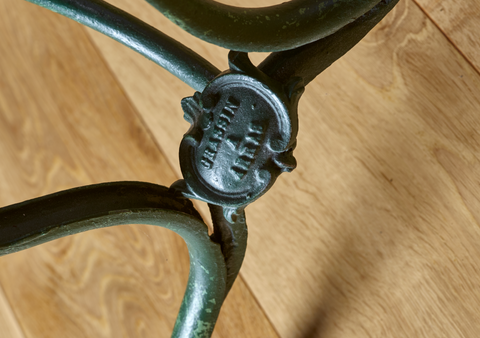
In the mid 19th century French manufacture Grassin Baledans of Arras in Northern France pioneered the use of wrought iron to produce garden furniture in large quantities as an alternative to traditional cast iron at a lower cost and to meet the needs of Parisian society who had discovered the benefits of outdoor living. They used semi round extruded wrought iron to produce a wide range of garden furniture between 1850 and 1914.
Arras furniture proved so popular that it was reproduced in France in the late 20th century and is still in production today in Eastern Europe. It takes a keen eye to spot particularly the 20th century reproductions but there are differences in the gauge of the semi round wrought iron and adjustments in design to enable modern manufacturing along with rust level, weathering and patina.
Natural Stone
Natural Stone has been used for centuries to hand carve statues, benches, urns and architectural elements for the garden. Stone reflects unique character and stability. Variations in natural stone’s broad range of colour, pattern, and texture are visually interesting and impossible to replicate. When these items come to market, they are very expensive and owing to the cost of production rarely reproduced.
Look out for: Variations in colour, pattern & texture
Composition stone
Composition stone, also known as cast stone, is manufactured to replicate natural stone. It is typically made from fragments of natural stone which have been mixed with cement allowing the mixture to be poured and shaped as required in moulds. These moulds were often created from the original carved stone items. The casting is often very sharp and with weathering it is often difficult to tell from natural stone- the one sign that the item has been cast in a mould is that there will usually be a few air holes in the surface of the stone. Primary maker of garden items, statutory and architectural items.
Look out for: Any signs of air holes
Classic Makers: Coade Stone
First marketed at the turn of the 1770s, Coade stone was a remarkable new building material. Tough and hard-wearing, it offered new opportunities for fine- detailed decoration. It was the first ever ‘artificial stone’ and the inventor Eleanor Coade was acknowledged as a major influencer on 18th century architecture. The material that Mrs Coade made wasnt stone. It was ceramic - a mix of clay, terracotta, silicates, and glass - which was fired for four days at a time in incredibly hot kilns.
The recipe and the production process were both closely guarded secrets, something which only added to the appeal of her product. Coade’s commitment to employing highly skilled craftsmen and artists likewise guaranteed consistent quality.
The strength and durability of Coade stone, however, meant that many of the objects produced in the 18th century still survive, as precise and strong as when they were first made. When Coade Stone comes to market its quality, originality and rarity make it very expensive.
Concrete
In the 20th century, garden ornament pots and planters were mass produced cheaply using concrete. This hard-wearing material means a 50-year-old, well-weathered piece can still look very attractive, and close to its original shape. Concrete often lacks definition and detail, there are usually a lot of air holes in the surface of the concrete that shows it is not stone. The weight is also a giveaway as concrete is about 50% heavier than cast stone and 65% heavier than carved stone.
Look out for: Weight, definition and detail
Terracotta
Terracotta was used both architecturally and for statutory purposes during the 19th century, but its modern revival in the garden dates from the 20th century, when artisan potters became interested in the aesthetic properties of the material. Terracotta comes from clay which is moulded and sometimes hand decorated before being fired in an oven. It is a delicate material and it is therefore rare to find older pieces in good condition. It was used etc etc.
Look out for: Dark patina, texture due to weathering and fine detailing
Classic Makers: Compton Pottery
Liberty & Co.’s first Book of Garden Ornaments declared “Never before, in this country at least, has the Garden Pot been treated as an item, per se, of decorative skill”. Engaging the services of leading designers such as Archibald Knox and Mary Watts, Liberty & Co. commissioned a wide variety of terracotta garden pottery.
Terracotta is more delicate than stone or concrete so less of the early 20th century has survived. Therefore, hand thrown artisan made terracotta pots such as those made for Liberty by Compton Pottery are increasingly rare. Knox and Watts designs are also well publicised and not often reproduced. Old terracotta darkens with age and is easily identified from new.
Summary to help you discover authentic items
By keeping these tips in mind, you’ll be able to spot fake antiques and ensure that you’re purchasing a genuine piece of history for your garden.
Check the materials
Garden antiques are often made from durable materials, such as cast iron or wrought iron. If a piece is made from lightweight materials or flimsy metal, it may be a fake.
Look at the details
Pay attention to the details on the piece, such as the scrolling and other embellishments. Details should not look poorly made or too uniform.
Check for signs of wear and tear
Genuine antiques will show signs of age, such as rust, patina, and minor dents or scratches. The piece shouldn’t look new and signs of wear should not be uniform.
Consider the craftsmanship
If an item is forged it won’t be completely symmetrical and if its welded it won’t be 19th century. Craftmanship is a tell-tale sign of age and authenticity.
Get an expert opinion
If you’re not sure whether a piece is genuine or not, consider getting a second opinion from an expert in the field. Antiques dealers and specialist auction houses can often help you determine the authenticity of a piece. Look for reputable experts who specialise in garden antiques, and research their reputation.
Protecting Your Investment
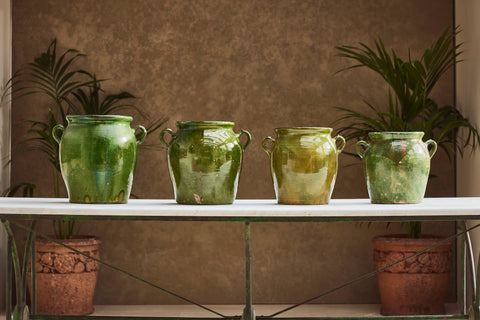
As with any investment, you want to protect it - this is no different with garden antiques. To ensure you preserve the past beauty of your items for the future generations then follow these insights.
Metalwork
Metal garden furniture, ornaments and urns as they were intended for outdoor use is one of the few areas within the antique sector where it is acceptable to paint the original to protect from deterioration. Patina created from years of weathering can be very attractive and overpainting will destroy years of history-should be avoided if possible.
It is worth considering that with French Garden Antiques, in particular, as the humidity in the UK is greater than that in France, that the rate of corrosion will increase and the attractive patina is lost to the rust. Sometimes full restoration required to extend useful life of an item would include removing all the old paint, carrying out repairs and re-applying modern anti corrosive coatings. Preservation to protect the patina would include the application of clear penetrating oils, consolidators or lacquers designed not to alter the appearance of the piece.
Stone, terracotta, and lead
Most objects designed for exterior use will either be naturally robust or protected from the elements with paints and sealers. There will always be from time to time some maintenance required. Repairs do not necessarily reduce the price of a piece if carried out professionally. Blacksmiths should be used from wrought iron repair, foundries for cast iron repairs and stone masons for stone repairs. There are also repair companies specialising in the repair of terracotta, Coade Stone and lead. Using a specialist is key to preserving value.
Want to download a copy of our Garden Antiques Buyer's Guide? Download here.





